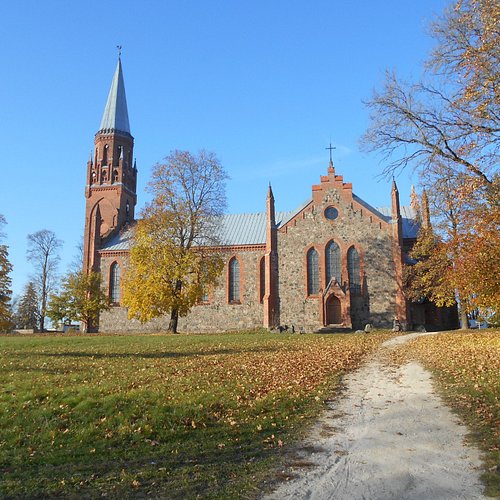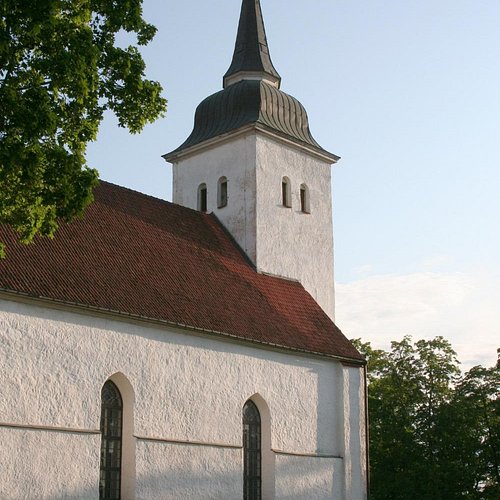Top 5 Churches & Cathedrals in Viljandi, Viljandi County
Viljandi (Estonian pronunciation: [ˈʋilʲˑjɑnʲˑdi]; German: Fellin) is a town and municipality in southern Estonia with a population of 17,473 in 2013. It is the capital of Viljandi County. The town was first mentioned in 1283, upon being granted its town charter by Wilhelm von Endorpe. The town became a member of the Hanseatic League at the beginning of the 14th century, and is one of five Estonian towns and cities in the league. The once influential Estonian newspaper Sakala was founded in Viljandi in 1878.
Restaurants in Viljandi
1. Halliste Holy Anna Church
Overall Ratings
5.0 based on 1 reviews
The Halliste Lutheran Church is one of the most beautiful and interesting churches in Estonia. The Halliste Church, which was seriously damaged in the course of various wars, acquired its present appearance in 1991 with the help of local initiative. When visiting the church, make sure to look at the altar painting entitled Christ by Estonian artist Juri Arrak and enjoy one of the frequent concerts.Interesting facts: - The church has an unusual black ceiling.- After a fire in 1959, the church stood in ruins for 30 years.- The oldest parts of the current stone church dates from the 15th century.- The Halliste Church is the home church of Estonian President Toomas Hendrik Ilves.
2. Viljandi Pauluse Kirik
Overall Ratings
4.5 based on 8 reviews
When the town of Viljandi started to grow in the middle of the 19th century the only church in town became too small for the people. The Viljandi estate owner baron Ungern-Stenberg gave the community a part of his estate as building ground for the church.Interesting to know:· The architect of the sanctuary that was consecrated in 1866 was Matthias von Holst.· During the construction of the building so called Tudor Gothic elements were used as they were fashionable at that time. · The author of the altar painting "Christ on the Cross" is Karl Christian Andreae.· Since 1866 a G. Knauf organ fills the church with music, the biggest still functional organ of its kind in Estonia.
3. St. John's Church
Overall Ratings
4.0 based on 25 reviews
The church devoted to John the Baptist was erected in the 17thC upon the ruins of a Franciscan abbey. The church was destroyed several times in various wars and then invariably rebuilt. Still functioning after the Second World War, it was closed in 1950 and turned into a warehouse.It was consecrated again in 1992 and is now often used as a concert venue. Interesting to know:*This place of worship contains the communion table by Aivar Oja and stained-glass windows by Renee Aua.*Wall carpets have been made by the local textile artist Prof. Anu Raud, whose work "Mother Tree” is displayed in the UN's main building in New York.
4. Kopu Peetri Kirik
The small neo-classical church with its strong tower was built in the years 1821-1825. The iconostasis of the church hall is embellished with antique shape pilasters and entablature.Interesting to know:·The plot of the altar painting "Let the children come to me" by an unknown artist is unique.·The epitaphs of the von Stryk family, the family of the patron of the church, were preserved.
5. Karula Maarja Church
Karula Church has been working in the converted manor granary since 1997. The most special feature of the church is the stained glass painting 'Eucharist' of Estonian artist Dolores Hoffmann which depicts local people as the disciples against the background of the holly landscape of Karula.The doors of the Karula Church are open to visitors during Sunday services. Please contact a representative of the congregation if you wish to visit the church some other time.Interesting facts:• The same building was used as an animal barn during the Soviet times.• The stained glass painting was donated to Karula Church by the descendants of the German squires the von Grotes.



